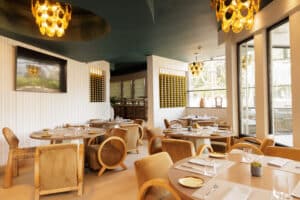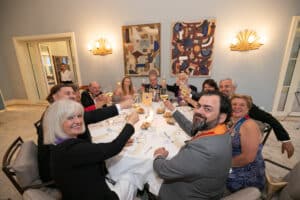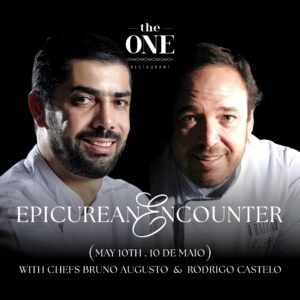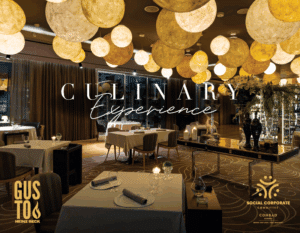Ever since early man discovered cooking with fire, he was up to the challenge of how to tame its powers so that food comes out moist, juicy and delicious.
Attempts have been made with cooking vessels (cast iron or clay pots) and cooking techniques (bain-marie or poaching), but the greatest breakthrough took place in the 20th century when a particular technique revolutionised our relationship with heat. It goes by the name ‘sous vide’, meaning “under vacuum”, and implies sealing the food in a vacuum pouch and cooking it at a precise temperature in a water bath.
Whilst in essence the sous vide method marries two steps, vacuum packing and low-temperature cooking, it is the latter part that carries the greater significance. Controlling the cooking temperatures is what enabled sous vide to become a playground of textures and flavours. It would probably be more accurate if it were called “precision cooking”, but sous vide is what we have got, and we shall stick to this naming convention.
As a method, it came about in France around 1970s as part of the commercial food production. Bruno Goussault, a microbiologist, was tasked with making unattractive cuts of meat more palatable and he discovered that cooking them at a low temperature helps achieve that.
He delivered a paper on the subject in 1974, right at the time when Jean Troisgros, a three-Michelin-star chef, was battling the costs of an expensive ingredient, foie gras. He was frustrated with the quantity of fat that would melt out during conventional pan-frying, and turned to a local charcutier, Georges Pralus, whose plastic-wrapped and slow-cooked method reversed that.
Pralus, at the restaurant kitchen, and Goussault, at the industrial kitchen, later joined forces on a project, aiming to deliver the high-end food for the fast trains. In 1985, after two years of work, their efforts resulted in a launch of fine-dining on the Paris-Strasbourg line. It was then that the sous vide method entered professional kitchens, taking on Europe first, and from there spread throughout the rest of the world.
When cooking with temperature, first and foremost we rely on our senses in assessing the progress. For example, when making a steak, we guide our actions by the pan’s sizzling action (sound) and judge its doneness using the firmness finger test (touch). Furthermore, to get it right, we often subject our food to higher temperatures. In this way, when attempting to bring the centre of the beef tenderloin to an ideal 51C-52C, we place it in the oven at 150C, which can lead to drying out of the outer layers of this delicate cut.
Sous vide helps address these culinary challenges and allows chefs to take control over the heat in the kitchen with degree-like precision as often the better results hang exactly in the balance of just a few degrees. For example, cooking eggs at 62.8C delivers an opaque white ever-so-slightly thicker than raw yolks. Raising the temperature to 65.6C allows the coagulation of whites into soft protein chunks and achieves very tender, yet firm yolks.
What lies at the heart of this control and precision is a piece of technology; in fact, two pieces – an immersion circulator and a vacuum packer. The vacuum packing has been around for some time and has been mainly used for food preservation. Removing oxygen limits the growth of microorganisms and, as a result, extends the shelf life of products. This can be also furthered by cooking vacuum-packed food (akin to pasteurisation), which, under some circumstances, can grant as long as 90 days of usability if stored under 2.5C.
Vacuum packing also ensures an even transference of temperature all across the food, hence the pouch must hug the food tightly. It also helps to maintain shape and bring out the flavour. When cooked vacuum-packed, meats retain the juices that would otherwise escape into the pot. In addition, compressed fruits like pineapple become translucent after some vacuum treatment. They also become meatier and more intense in flavour.
The immersion circulator is the tool that controls the temperature of the water bath. It is an elongated device with an internal heating element and an interface on the top. It has a fixing to attach to the bath where it will push the water through its coil and, in so doing, will keep the set temperature. Any pot can be used as a bath as long as it is big enough to hold both – the immersion circulator and the food.
It is rare that the sous vide cooking temperatures exceed 85C. As we already know, the heat toughens and dries tissues and fibres. Thus, a medium beef is usually cooked between 60C-62.8C; a fish sits between 50C-55C, and vegetables are bathed between 82C-84C. These lower temperatures also leave a broad window for taking the product out of the bath after it has reached the desired temperature, because this is never exceeded. This eliminates the need for constant attention and gives the chef greater flexibility.
One thing I must admit: when food comes out of the sous vide bag, it can look pretty unappetising, but this is usually fixed by flash frying the products in the pan right before serving.
By Dr. Irina Mikhailava
|| features@algarveresident.com
Dr. Irina Mikhailava, a chef and a good food champion, happily residing in the Algarve and eating all over the world with an appetite for learning, sharing and writing. Instagram: incompanyoffood
























